
Brazil
Rio de Janeiro
Rio might just be one of my favorite cities in the world. The perfect combination of city and beach with the jungles of the national park nearby, the activities are endless—and that’s before you even explore the restaurant and nightlife scene. I visited during Carnaval, where the city is bustling 24/7 with street blocos, parades, and samba school performances. Our 5-day trip was sufficient to explore the city, though there’s much more in the country I’d like to explore, from the Amazon rainforest and Iguazú Falls to the vibrant city of São Paulo and the country’s spectacular beaches.
Rio Highlight #1
Take the cable car up Sugarloaf Mountain
There are so many spectacular sights to see in Rio, but one of the most impressive is the view from Sugarloaf Mountain (a literal translation of Pão de Açúcar). The ascent is split into two different parts, each providing sweeping vistas of the city below. The first platform offers restrooms, shops, a bar, and a seating area where you can leisurely enjoy a bite to eat. We sipped from coconuts while relaxing at the bar-front swings, admiring the planes from the nearby airport on their steep ascent past Sugarloaf Mountain.
We then lined up for a second cable car, which brought us directly to the top of Sugarloaf Mountain. The entirety of Rio is visible below—Flamengo and Botafogo Beaches to your right, Christ the Redeemer statue in the distance straight ahead, Red Beach and Copacabana to your left, with Ipanema and Tijuca National Park in the distance. This higher level of Sugarloaf offers hiking paths, which we traversed while watching common marmoset monkeys play in the trees.
Returning to the base of Sugarloaf Mountain brings you directly to Praia Vermelha, or Red Beach. Named for the reddish-tinted sand, this is one of the smaller beaches you’ll find in the city, but its secluded location at the base of the mountain provides jaw-dropping views. The beach was packed with locals, though we managed to find just enough space to lay down our towels and dip our feet into the water as we waited for our table to open at the one beachside restaurant.
Once our table was available, we enjoyed an equally memorable meal at Terra Brasilis. Oversized windows offered panoramic views of the water, while the authentic Brazillian cuisine was yet another highlight of the entire experience.
Rio Highlight #2
Watch samba schools compete at the Sambódromo
I visited Rio for the most exciting event of the year—Carnaval. There were endless street parties, parades that shut down entire neighborhoods, and of course, no shortage of samba schools competing for the crown. The Sambódromo was specifically built to host Carnaval’s famous samba school competition, where the city’s most prestigious dance schools compete to be named the champion.
The impressive venue features one long road with bleachers on either side and seats 90,000 spectators. There are multiple nights of competitions in the days leading up to Carnaval, with each performance night lasting upwards of 6 hours (our 9 pm event lasted until nearly 3 am!). Each school has 75 minutes to parade down the route—a non-stop, high-energy performance that repeats for each section of the crowd to see. The performances are judged on their theme, story, props, and floats, in addition to the individual dancer’s moves and costumes.
The night is truly one big party, with drones, fireworks, and over-the-top costumes and special effects making each school’s performance unforgettable. If you visit Rio during Carnaval, the Sambódromo is a can’t-miss—just make sure you come prepared for a nonstop, late-night party.
Rio Highlight #3
Explore Tijuca National Park
We booked an Airbnb experience to bring us outside the city to the urban jungle of Tijuca National Park. Our experience started with our guide, a former history teacher, picking us up from our hotel in an open-top Jeep. Driving through the city streets, he shared a brief overview of Brazilian history and pointed out Rio sights that we hadn’t yet seen.
Our first stop was a hike up to Pedra Bonita. The low-impact walk through the jungle offered amazing views of capuchin monkeys and butterflies, though we didn’t spot other native wildlife, like toucans, sloths, and coatis. The thick trees cleared at the top of a spectacular viewpoint, which provided spectacular ocean views. There’s even an opportunity to paraglide onto a nearby beach.
The freshest acai bowl you’ll ever have is one from a cafe at the base of a Brazilian jungle, and that’s exactly what we enjoyed after our descent. A short Jeep ride brought us further into the jungle to swim under a waterfall for a much-needed cool down. We ended the day at Vista Chinesa, an observation deck with views of the Christ the Redeemer statue, Sugarloaf Mountain, the city of Rio, and the Atlantic Ocean beyond.

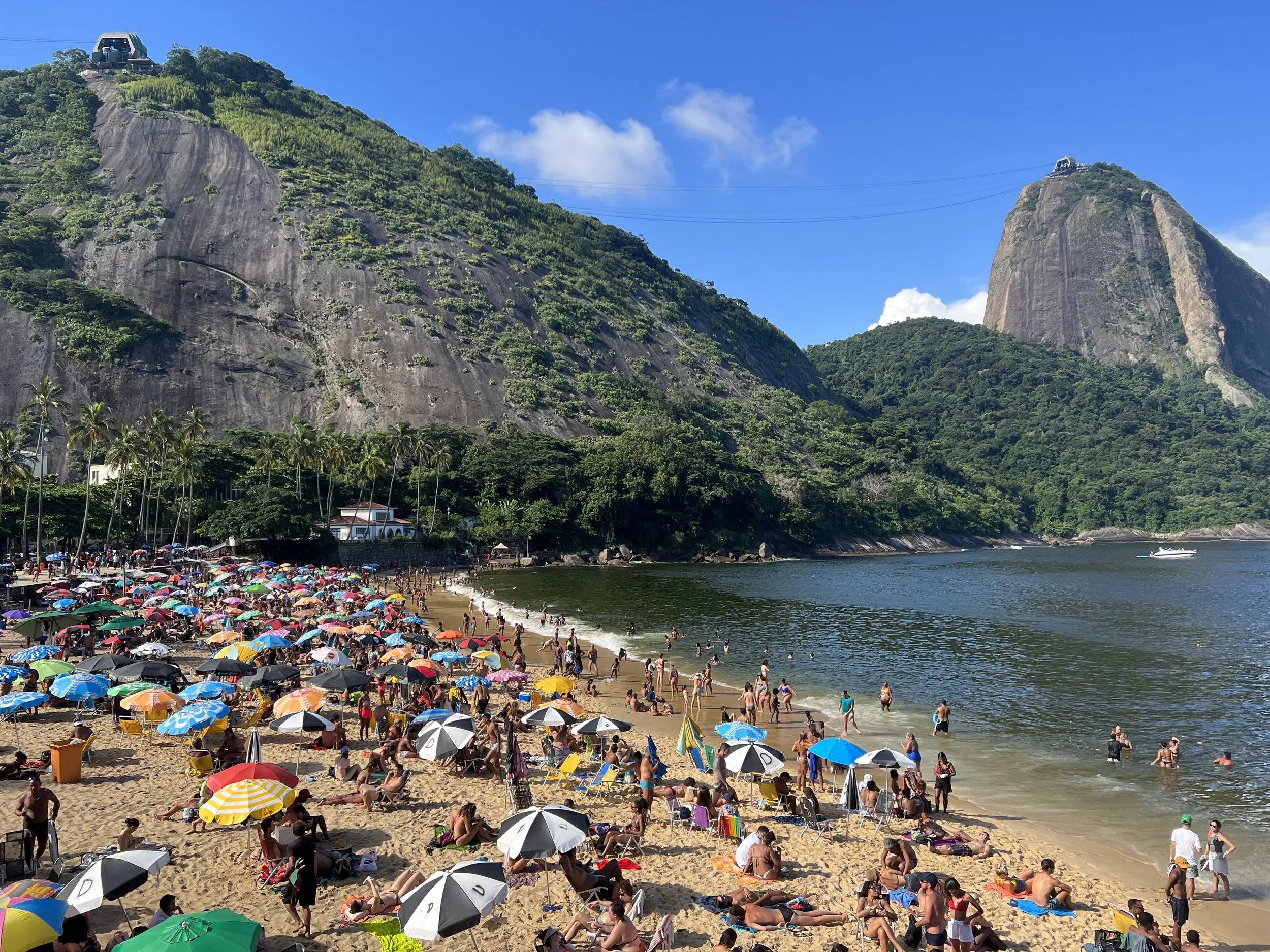




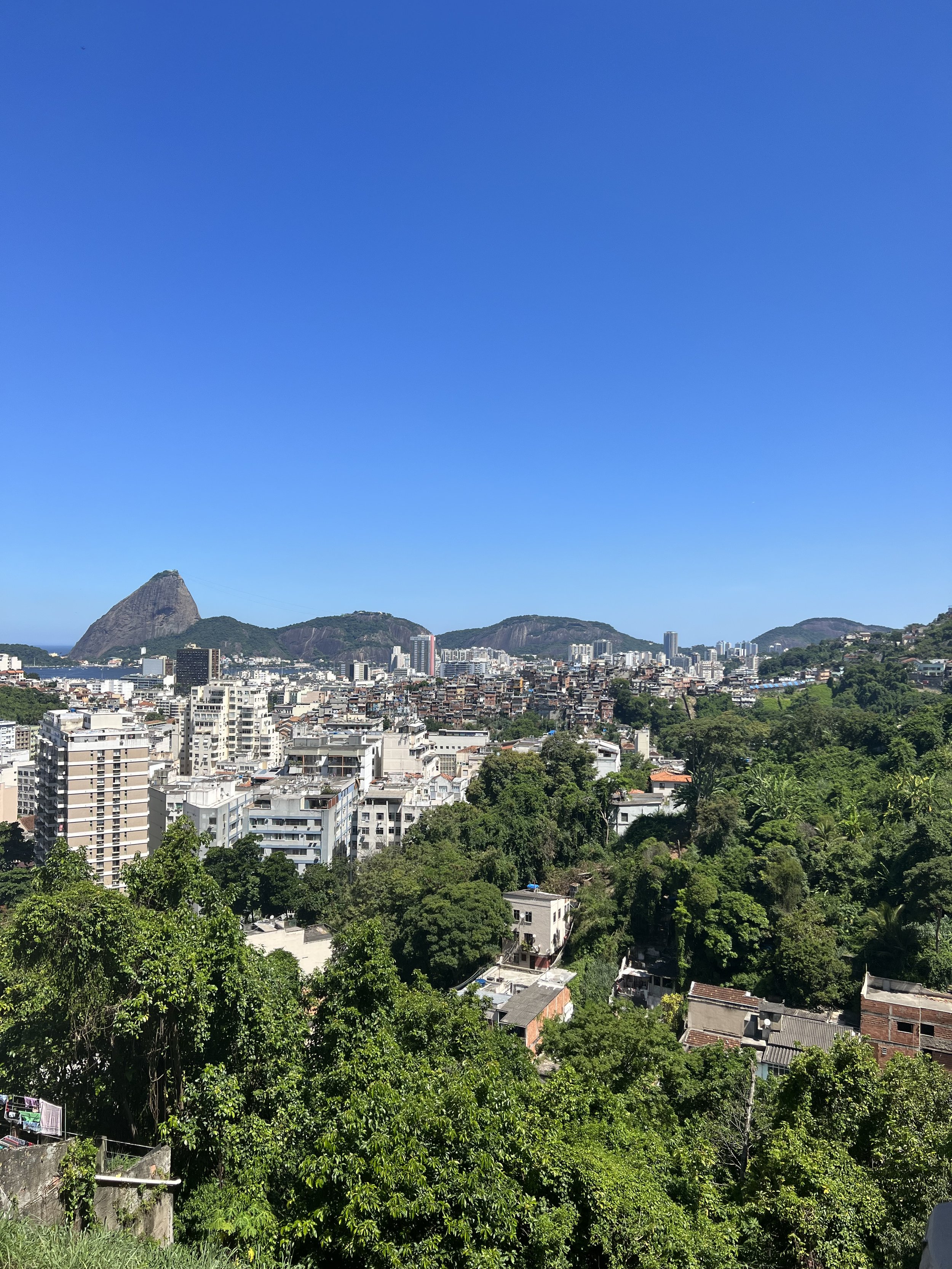
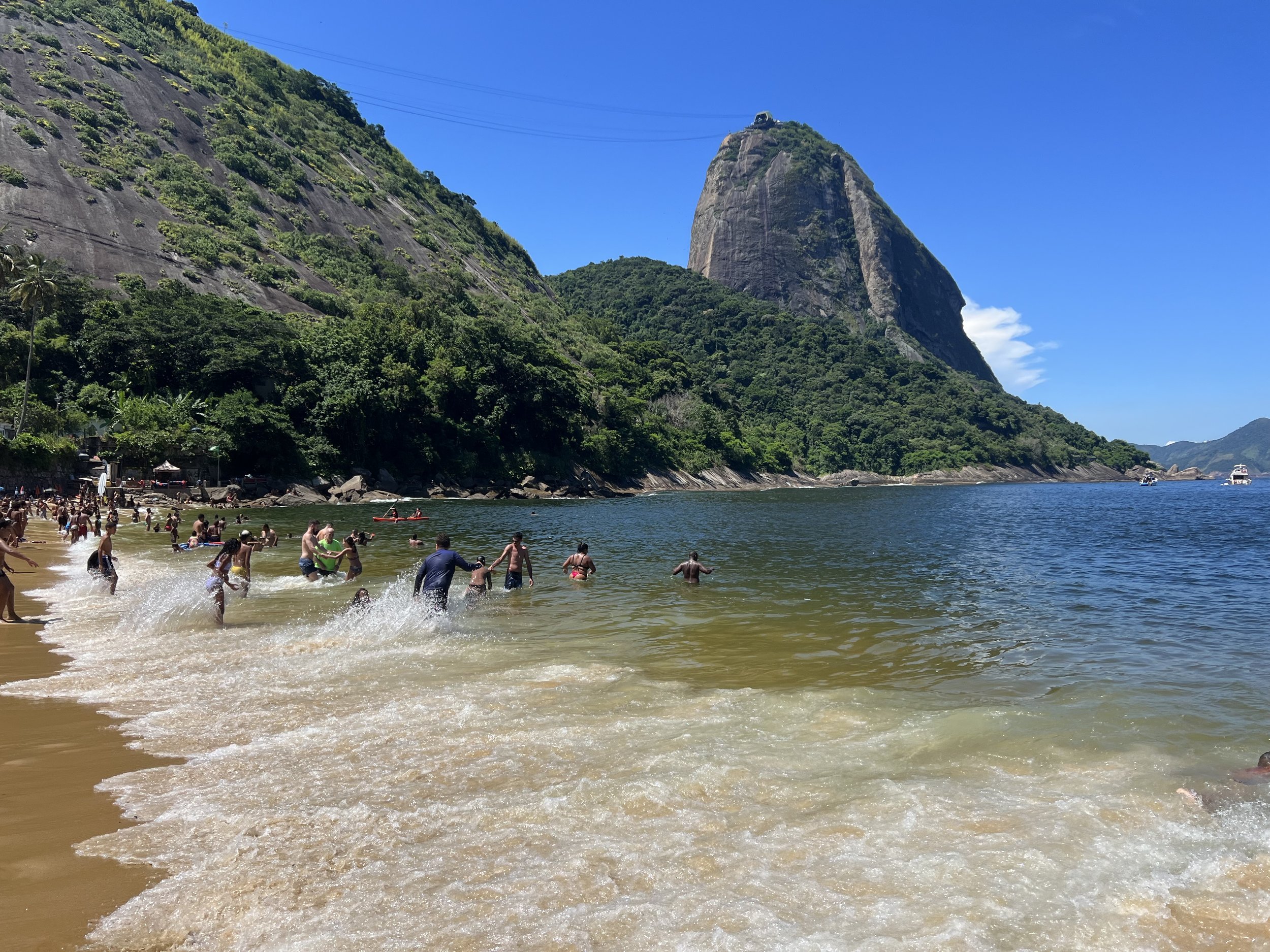
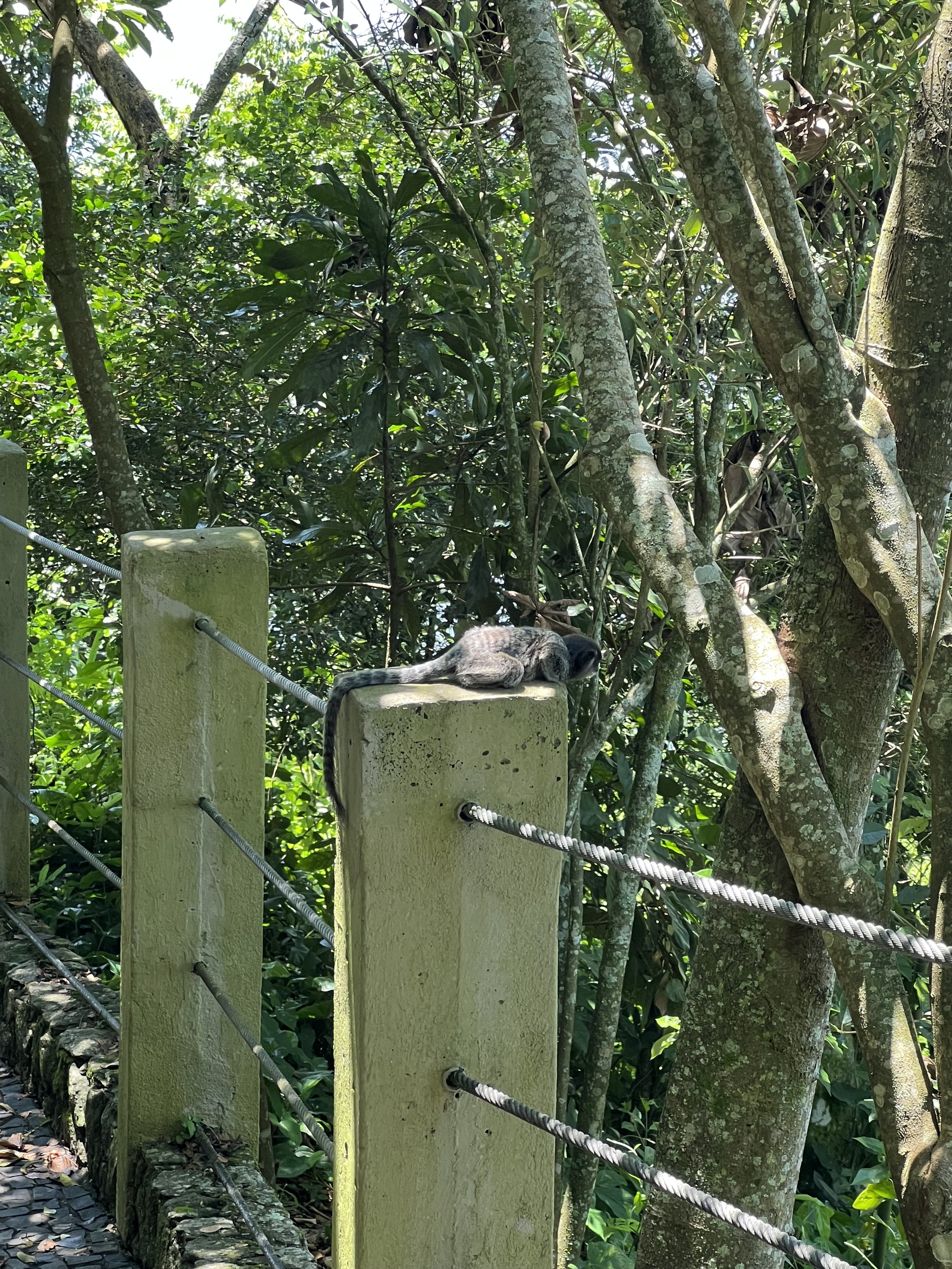

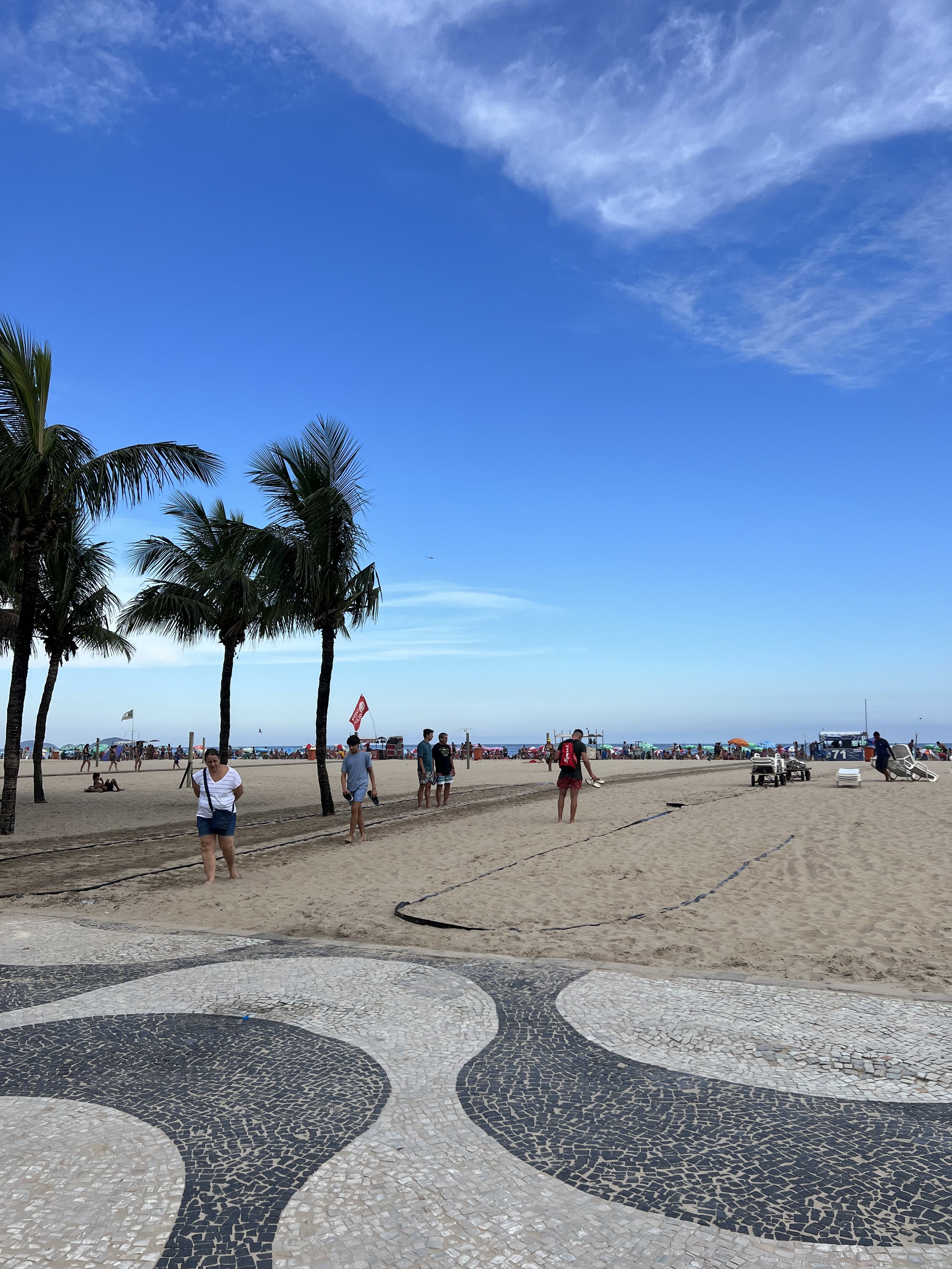

















Restaurant Highlights
Plage Café (Parque Lage)
The backdrop of this casual restaurant is too good to be true—and that’s exactly why you’ll find a line around the corner well before the cafe opens at 10 am. The outdoor eatery is located in a classical mansion within the grounds of Parque Lage, with incredible views of the Christ the Redeemer statue rising in the distance. The menu is broad and the scenery is spectacular, making this one of my favorite meals in Rio.
Braseiro (Copacabana)
A casual, counter-service hole-in-the-wall, this restaurant offers one of the best roast chicken meals in Rio. They offer large portions and an authentic Brazilian grill experience and came highly recommended by a local.
Momo Gelato (Ipanema)
There’s nothing better than ice cream after a day at the beach—which is exactly why we visited this well-known café multiple times.
Cantón (Copacabana)
As a change of pace, we visited this Peruvian-Chinese restaurant for a delicious meal. It offers a great selection of cocktails in a vibrant setting, and while it was one of our more extravagant dinners out, the bill for three people was under $100 total.
What to Know Before You Go
Getting around:
Download the 99 app before you visit Brazil—this was the most convenient ride-share app and the one we used most often. There is a subway system in Rio, but because of the plentiful, inexpensive cars available via 99, we never used public transportation.
Where to stay:
We stayed in the Flamengo neighborhood of Rio. This area is slightly removed from the high-profile beaches of Copacabana and Ipanema, though both are a short, 15-20 minute drive from Flamengo. I enjoyed the accessibility to Flamengo Beach, an area most often frequented by locals with spectacular views of Sugarloaf Mountain. I would recommend choosing a hotel close to one of the major beaches (Flamengo, Copacabana, or Ipanema) for both the tourist infrastructure and ease of getting around.
What to eat:
Rio has a diverse food scene, though Brazil is known for both grilled meats and a traditional breakfast bread, pão de queijo. Pão de queijo is a light, airy cheese bread eaten for breakfast or as a snack, offered by many local cafés and even an entire chain called Casa do Pão de Queijo. Brazilian barbeque is also easy to find throughout the city, typically offering a variety of meat on skewers.
When to visit:
Carnaval is the most popular time to visit Rio. The dates of this festival change yearly according to when Lent is celebrated, but typically falls in February or March. As Brazil is located in the southern hemisphere, the summer months are between November and March, though there is some chance of rain most days.



